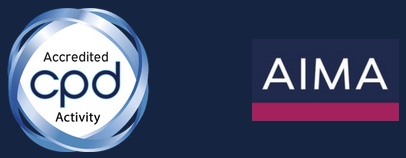
Written by Camilla Cater
Senior Director
The Securities and Exchange Commission’s (“SEC”) registered investment adviser (“adviser”) population encompasses a multitude of variances, from the small advisory firm to the multi-billion global asset manager, representing a diverse client base of individuals, trusts, investment companies, private funds and pension plans.
There are currently more than 15,000 registered investment advisers, overseeing more than $125 trillion in assets under management. Over the past few years, even during the COVID lock-downs, the SEC has continued to annually review around 15% of the adviser population, in spite of increasing numbers. Therefore, if you are a registered investment adviser who has not yet received “the call” from the Division of Examinations (“the Division”), you will be justified in wondering how close you are to the top of that list.
On September 6, 2023, the Division published a Risk Alert (“Alert”) providing guidance for advisers about the examination process and offering insights into the rationale for firm selection as well as outlining documents that may be requested. The Division has made it clear that it is providing this information so that advisers may better prepare themselves for an examination.
Selection Process
When it comes to selecting firms for examination, the Division follows a risk-based approach that will take into consideration factors such as changes in market conditions and industry practices, as well as areas of focus identified by the Division in their annual examination priorities memos.
The Division leverages technology to analyse large volumes of data from industry and firms, including Form ADV and Form PF filings, to identify potential risk areas. Therefore firms may be selected for a variety of reasons, including whether the Division has identified:
- a firm-specific risk or characteristic that requires further consideration;
- tips, complaints, referrals or adverse media naming the firm;
- metrics requiring review due to the length of time since registration, e.g. newly registered advisers (this is a particular area of focus for the Division: see our article, 9 May);
- prior examination observations and conduct, especially repeated deficiencies;
- supervisory issues, including a firm’s disciplinary and disclosure history;
- conflicts of interest and conflicts management;
- material changes in a firm’s management, or personnel;
- indications of financial or market stress; and
whether the firm has access to client and adviser assets, or presents other compliance risks.
Examination Focus
Once an adviser has been selected for review, the examiners will determine the scope of the examination, taking into consideration the adviser’s business model and associated risks as well as the reason for conducting the examination.
Core areas of review typically include:
- operations;
- disclosures;
- conflicts of interest; and
- compliance practices, with respect to matters like:
- custody and safeguarding of client assets;
- valuation;
- portfolio management;
- fees and expenses;
- brokerage and best execution.
Information Request
Advisers selected for examination will typically receive a call from the Division to inform them that an examination has opened, and the Chief Compliance Officer will be promptly provided with an initial information request list that looks to provide the Division with:
- general information, detailing the adviser’s business and investment activities;
- information about the compliance risks identified by the adviser, and written policies and procedures to address these;
- information for the Division staff, to assist in testing of advisory trading activity; and
- information for the Division staff, to perform its own compliance testing.
This initial information request list will set out the method for securely sharing information with the Division as well as the time frame for the return of documentation. On this latter point, we have certainly seen requests for a very speedy return, so for firms that have not yet undertaken a mock examination to test response times, as well as robustness of controls, it is certainly worth looking at the “Typical Initial Information Examiners Request of Investment Advisers”, detailed below, in order to understand the breadth of a request.
What’s the takeaway?
As ever, with an SEC examination, preparation of documentation and staff is essential to presenting your firm in the best light. Mock audits can act as a regulatory rehearsal, helping firms to identify potential pressure points before a formal examination.
If you would like more information on how best to prepare, at RQC Group we can help you adequately prepare your firm for an SEC Examination.
Typical Initial Information Examiners Request of Investment Advisers
| General Information | |
|---|---|
| Organizational Information |
|
| Business and Operations |
|
| Disclosures and Filings |
|
| Legal and Disciplinary |
|
| Information Regarding the Compliance Program, Risk Management, and Internal Controls | |
|---|---|
| Compliance Program and Oversight Process |
|
| Valuation |
|
| Information Processing, Reporting, and Protection |
|
| Information to Facilitate Testing with Respect to Advisory Trading Activities | |
|---|---|
| Information About Advisory Clients and Accounts |
|
| Portfolio Management |
|
| Brokerage and Trading |
|
| Conflicts of Interest and Insider Trading |
|
| Information to Perform Testing for Compliance in Various Areas | |
|---|---|
| Marketing and Advertising |
|
| Financial Records |
|
| Custody |
|
Please do contact us if you’d like information about our SEC Mock Audits, in preparation for a possible SEC Examination.











